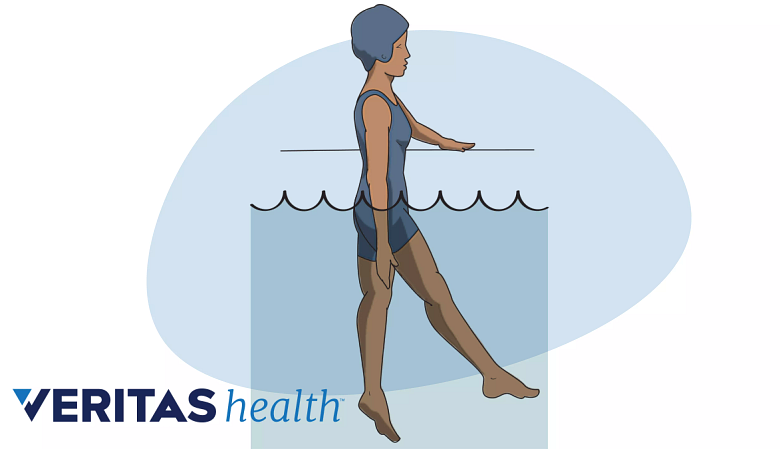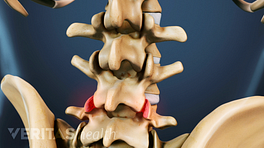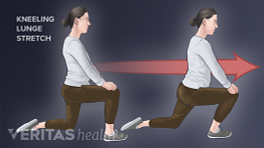Water therapy exercise programs consist of a variety of treatments and exercises that are done in a pool and may be specifically designed to provide relief of low back pain or neck pain. These exercises also serve to condition and strengthen muscles to help avoid future recurrences of back pain.
Water therapy exercise is especially helpful in cases where a land-based exercise program is not possible due to the intensity of pain, decreased bone density, disability or other factors. As such, water therapy is a versatile exercise and is particularly good for people with conditions such as:
- Osteoarthritis
- Advanced osteoporosis (with susceptibility to and/or pain from fracture)
- Muscle strain or tears
In addition to those conditions, water therapy is frequently recommended as one form of exercise therapy to treat those with diabetes as well as individuals with high blood pressure. Both conditions can improve and become more manageable with aquatic exercise.
All of these conditions can make it uncomfortable or painful to exercise on a hard or even padded surface, or while standing. Water provides a much gentler, welcoming environment.
Water therapy offers many of the same benefits associated with a land-based exercise program, including development of a treatment plan that is carefully tailored to the individual. Water therapy may also be referred to as pool therapy, hydrotherapy, or aquatic therapy.
In This Article:
- Water Therapy Exercise Program
- Water Exercise Therapy Limitations and Considerations
- Water Therapy Exercises
- Video: Why is Exercise Important for Lower Back Pain?
Benefits of Exercising in Water
The physical properties of water make it a highly desirable medium in which to exercise to treat back pain and other musculoskeletal injuries. Some of the most important properties of water that make exercise easier are:
- Buoyancy: water counteracts gravity and helps to support the weight of the patient in a controlled fashion as the patient is immersed. This can aid the development of improved balance and strength. The buoyancy of water also permits a greater range of positions due to the virtual elimination of gravitational forces, particularly for exercises that require lifting the legs, the heaviest limb of the body for most people.
- Viscosity: water provides resistance by means of gentle friction, allowing strengthening and conditioning of an injury, while reducing the risk of further injury due to loss of balance.
- Hydrostatic pressure: there are powerful effects produced by hydrostatic pressure that improve heart and lung function, making aquatic exercise a very useful way to maintain and strengthen heart and lung function. This pressure effect also aids in improving muscle blood flow.
Together, these properties allow development of an exercise regimen that minimizes the weight placed on the spine (axial load) and risk of injury due to unintended movements during exercises. For example, individuals with osteoarthritis in the neck and shoulder could practice arm circles or shoulder rolls in water to improve their range of motion and strength. Because the water provides both mild resistance and support through buoyancy, the person would most likely not experience the pain caused when a tired arm drops suddenly, as it can do at the end of land-based exercises.
Moreover, the perception of pain may be diminished as a result of many factors associated with water therapy, such as the relaxing sounds as well as the warmth of the water, making it a different and often very pleasurable experience.
Often it is easier to start an exercise program in the water before trying it on land. For example, range of motion stretches for hip flexors and abductors are generally much easier to try out first in water because the leg is supported somewhat as the individual learns the right positioning. Buoyancy when doing water therapy exercises can be increased with the use of floats










